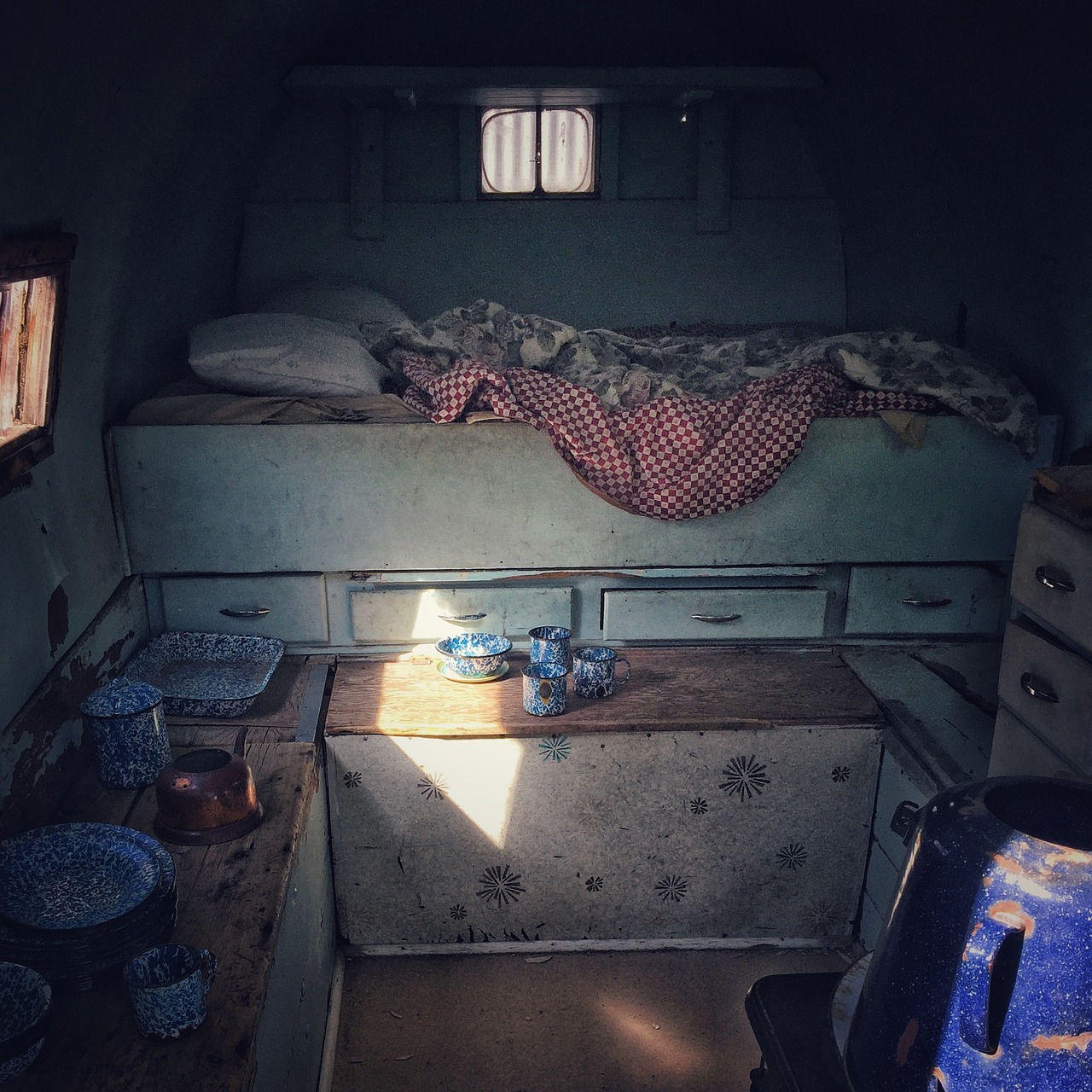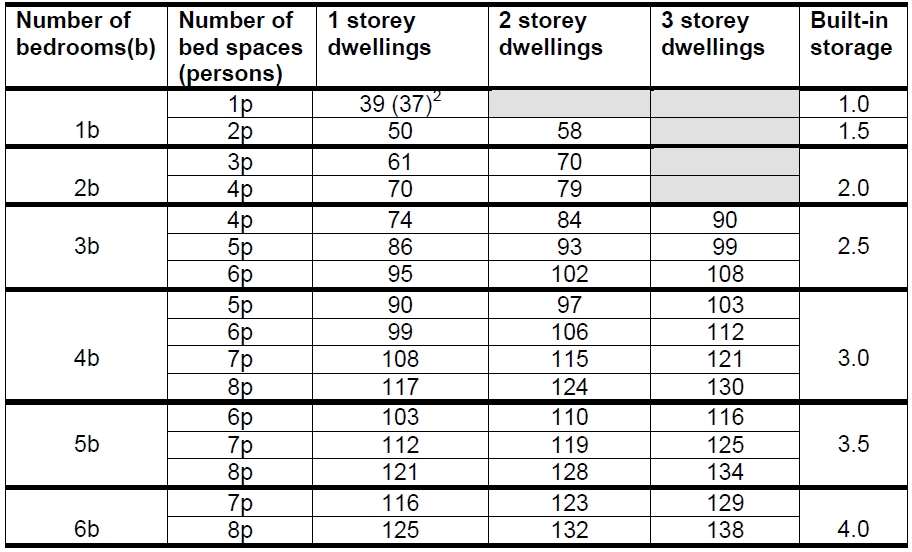Minimum space standards
[edit] Which country has the smallest homes?
Of all EU countries, England has the smallest homes by floor area. A study by Find Me A Floor in 2017 found that homes in England have an average floorspace of 71.2 sq. m. This is compared to Italy’s average of 108.2 sq. m and Germany's average of 92.7 sq. m.Canada has the largest homes in the world measuring 150 sq m, with the US at 130 sq m.
The Smallest House in Britain, also known as Quay House, is a residential building in Conwy Quay, North Wales, that measures 3.05 m (10 ft) high and just 1.8 m (5.9 ft) wide
As a result of the UK housing shortage, the average size of new homes has continued to shrink, with the emergence of micro dwellings (single residential units that tend to range from 14 to 46 square metres) micro flats and products such as pocket homes.
[edit] What standards are there for space sizes?
In 1961, The Parker Morris Committee published 'Homes for Today and Tomorrow', a report on public housing space standards in the United Kingdom. The Parker Morris Standards were then set out in the Ministry of Housing's 'Design Bulletin 6 – Space in the Home', published in 1963.
From 1967, these standards were prescribed in England’s public housing, by linking space, not to the expected occupancy levels, but to the utility of the homes. This approach is still adopted in Scotland, but since the 1980s, England’s focus has been on the delivery of more houses, not space, although the building regulations do set some space standards in relation to circulation space, means of escape and space requirements for people with disabilities.
In addition, a number of cities developed their own minimum space standards, with London introducing its own standards since 2011. There have also been a number of ad hoc standards, such as; The Housing Corporation minimum housing quality standards for housing association properties developed with public subsidy, the Joseph Rowntree Foundation Lifetime Homes standards and so on.
In 2012, the coalition government’s fundamental review of building regulations was labelled ‘the biggest change in housing standards in a generation’. The review prescribed that space sizes for all new-build homes around the country would be brought into line with the London standards.
In October 2015, the government introduced a new nationally described space standard, which set out detailed guidance on the minimum size of new homes. According to this standard, the minimum floor area for any new home should be 37 sq. m.
Table 1 - Minimum gross internal floor areas and storage (m²)
[2] Where a one person flat has a shower room rather than a bathroom, the floor area may be reduced from 39m² to 37m².
For more information, see Technical housing standards - nationally described space standard.
These rules were intended to rationalise and streamline the planning system, however, they were criticised for being overly complicated and onerous, as well as being unlikely to have a positive impact. Crucially, the rules for local authorities are only optional, and must be introduced through the planning system (rather than through building regulations) by including a policy in a local plan.
To do this, local authorities must demonstrate need and viability though testing and assessments before conducting a full local plan review, which has been described as unnecessarily bureaucratic and confusing. This means that in order to implement standards which have been described by the government as ‘reasonable’, local authorities are likely to wait for a wider plan review rather which could mean it takes several years to adopt them. In addition, the space standard is open to challenge from developers on site-specific viability grounds, even if the local authority has embedded it in local plan policy.
In addition, in 2013, the government temporarily relaxed planning laws, allowing office buildings to circumvent the planning process when being converted into housing. These conversions are not required to meet any planning-based quality standards, including the minimum space standards, meaning that apartments have been completed which are far smaller than the prescribed minimum of 37 sq. m.
In a separate move in December 2017, the government announced they were putting rogue landlords 'on notice', with the introduction of new measures to stamp out overcrowding and improve standards for those renting in the private sector. This includes new rules setting minimum size requirements for bedrooms in houses of multiple occupation:
- Room used for sleeping by 1 adult: No smaller than 6.51 sq. m.
- Room used for sleeping by 2 adults: No smaller than 10.22 sq. m.
- Room used for sleeping by children of 10 years and younger: No smaller than 4.64 sq. m.
For more information, see Tackling rogue landlords.
Housebuilders and industry bodies such as the RIBA have continues to call for national minimum space standard to be embedded within the Building Regulations, set as a standard for housing design across the country. As well as being beneficial for homeowners and tenants, housebuilders have argued that this would provide them with more certainty when bidding for land.
[edit] Related articles on Designing Buildings
- Floor area.
- Gross internal area.
- Housing Standards Review.
- International Property Measurement Standards.
- Micro dwellings.
- Micro flats.
- Occupant capacity of a building or space.
- Overcrowding.
- Pocket homes.
- Smallest house in Britain.
- Space.
- Tackling rogue landlords.
- Technical housing standards - nationally described space standard.
- Total useful floor area.
Featured articles and news
Delivering for tenants; National Retrofit Hub
New report offers recommendations to strengthen energy efficiency standards to protect private renters.
Government consultations for the summer of 2025
A year of Labour, past and present consultations on the environment, the built environment, training and tax.
CMA competitiveness probe of major housing developers
100 million affordable housing contributions committed with further consultation published.
Homes England supports Greencore Homes
42 new build affordable sustainable homes in Oxfordshire.
Zero carbon social housing: unlocking brownfield potential
Seven ZEDpod strategies for brownfield housing success.
CIOB report; a blueprint for SDGs and the built environment
Pairing the Sustainable Development Goals with projects.
Types, tests, standards and fires relating to external cladding
Brief descriptions with an extensive list of fires for review.
Latest Build UK Building Safety Regime explainer published
Key elements in one short, now updated document.
UKGBC launch the UK Climate Resilience Roadmap
First guidance of its kind on direct climate impacts for the built environment and how it can adapt.
CLC Health, Safety and Wellbeing Strategy 2025
Launched by the Minister for Industry to look at fatalities on site, improving mental health and other issues.
One of the most impressive Victorian architects. Book review.
Common Assessment Standard now with building safety
New CAS update now includes mandatory building safety questions.
RTPI leader to become new CIOB Chief Executive Officer
Dr Victoria Hills MRTPI, FICE to take over after Caroline Gumble’s departure.
Social and affordable housing, a long term plan for delivery
The “Delivering a Decade of Renewal for Social and Affordable Housing” strategy sets out future path.
A change to adoptive architecture
Effects of global weather warming on architectural detailing, material choice and human interaction.
The proposed publicly owned and backed subsidiary of Homes England, to facilitate new homes.
How big is the problem and what can we do to mitigate the effects?
Overheating guidance and tools for building designers
A number of cool guides to help with the heat.
The UK's Modern Industrial Strategy: A 10 year plan
Previous consultation criticism, current key elements and general support with some persisting reservations.
Building Safety Regulator reforms
New roles, new staff and a new fast track service pave the way for a single construction regulator.




























Comments
[edit] To make a comment about this article, click 'Add a comment' above. Separate your comments from any existing comments by inserting a horizontal line.
Please check the date of the information about the size of homes in Britain and the rest of Europe. I believe it is very old and we no longer have the smallest homes.
Thanks for your comment. It is indeed the case that England has the lowest average floorspace in Europe - see the updated first paragraph. -Ed.
This is a wiki site - so if you are unhappy with something, just click 'Edit this article' at the top of the page and change it.